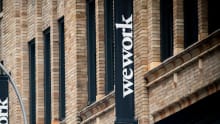Accelerating Leadership Development: Cracking the Code L&D Masterclass

Studies indicate that organizational success depends on the propensity to identify discrepancies between current workforce skills and anticipated future business demands. Today, organizations are accelerating the processes of developing leadership talent pool and preparing them for future business requirements and needs in a globalized work environment, which sees transformations every day. Knowing the parameters of what is changing and the questions related to how’s and why’s of the trends, along with understanding the ways in which leadership landscape can be handled is paramount along with how an action plan be made to accelerate ALD.
‘Leadership landscape is changing dominantly on four fronts – higher interdependence and need for collaboration, need to increase digital footprint, leadership bench and its impact on revenue and profitability, and negligence towards broken succession pipelines’ said Mohit Sethi, Director HR, Learning & Development, Nielsen India, who joined People Matters for the Masterclass Webinar and shared his insights on Cracking the Code on Accelerating Leadership Development.
Constant transformations in businesses today create a whole new work environment—more so in the leadership landscape today. Mohit, citing CEB's research, points out that the leadership landscape is changing dominantly on four fronts:
· Higher interdependence and need for collaboration: This covers aspects of geographically dispersed workforces, matrixed organizational structures and higher volume of information
· Need to pace up with change and being digital: This covers aspects such as leaders preparing to assume entirely new roles, managing increasingly wide scope of responsibilities and preparing for high velocity changes in job responsibilities
· Weak leadership bench and its impact on revenue and profitability: This covers aspects such as slower revenue growth and slow profit growth
· Negligence towards broken succession pipelines: This covers aspects like HIPOs exiting the succession pipelines, elimination of leadership positions, change in leadership members
The change in the leadership landscape is quite evident and well-known to both employees and HR leaders, as suggested by statistics. In the context of this changing environment, it is imperative to accelerate leadership development to match the pace at which the workplace vicinity is changing. A major roadblock in that path to change has been the existing realities of organisations, such as the hierarchy, talent management models, and headcount pressures. However, in the face of challenges to the work environment, the steps organisations can take to make the transition are described clearly:
· Getting the high performers to work together: Collaborated working of HiPos but with help from a program manager. The manager takes the responsibilities of reporting, showing and guiding the HiPos working in unison, which can increase the yield, and in hindsight, 1 + 1 = 11 becomes a reality.
· Measure leaders on Change Orientation and Digital Fluency: Organisations already use the 9-blocker for leadership and performance. That can be substituted with a Digital 9-blocker. The measurement can be done by adding two more dimensions – change orientation and digital fluency.
· Consider Engagement, aspiration and ability as the three benchmarks of high potential talents. Identify individuals with readiness on ability and show engagement and aspiration. It eases the headcount pressure, and those down the hierarchy organically grow.
· Bring HRPBS to facilitate discussions: Use data from all COE’s. Business unit leaders can see all the scorecards from all initiatives together on one bulletin board which allows them to see if the initiatives are linking together, if high performers are moving at the same time or if the people in initiatives benefit. That talent health card reduces the chances of business unit leaders missing pipeline leakages.
The webinar in a nutshell facilitated the understanding of how to hold discussions with the business and HR leadership teams and also provides a perspective at how COE’s of HR can synergise to create harmony on leadership development.











